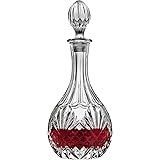Globally, Cabernet Sauvignon consistently ranks among the most recognized and widely cultivated red wine grape varietals. Its enduring popularity is evidenced by its vast plantings across diverse wine regions, reflecting a broad appeal among enthusiasts and casual drinkers alike. The video above offers a concise introduction to this iconic wine.
For those new to the world of wine, understanding Cabernet Sauvignon can sometimes feel like navigating a complex landscape of flavors and terms. This guide is intended to expand upon the video’s insights, providing a more detailed exploration of what makes Cabernet Sauvignon a beloved choice for many.
Understanding Cabernet Sauvignon: A Global Varietal
Cabernet Sauvignon is recognized as one of the world’s most prominent and prestigious red wine grapes. Originating in Bordeaux, France, this varietal has achieved significant global renown. It is cultivated in virtually every major wine-producing country, which contributes to its diverse range of expressions.
The grape itself is characterized by its small size and thick skin. These physical attributes are crucial to the wine’s ultimate profile. Consequently, wines made from Cabernet Sauvignon grapes are often distinguished by their robust structure and vibrant color.
The Distinctive Characteristics of Cabernet Sauvignon Wine
One of the most defining characteristics of Cabernet Sauvignon is its notable tannin content. Tannins are naturally occurring compounds found in grape skins, seeds, and stems. They contribute to the wine’s texture, creating a sensation of dryness and astringency in the mouth.
Furthermore, this high tannin level contributes to Cabernet Sauvignon’s capacity for aging. Wines with significant tannin content are often capable of developing greater complexity and nuanced flavors over many years when properly cellared. Therefore, understanding tannins is key to appreciating this varietal.
Exploring Cabernet Sauvignon Flavor Profiles
When tasted, Cabernet Sauvignon is typically identified as a dry red wine. This means that very little residual sugar is present after fermentation, resulting in a non-sweet taste profile. The dryness allows the other complex flavors and aromas to truly shine through.
The primary fruit flavors associated with Cabernet Sauvignon are commonly described as dark and concentrated. Black currant is a signature note, frequently complemented by blackberry undertones. These intense fruit characteristics form the backbone of the wine’s taste.
Beyond the fruit, secondary flavors can often be detected, adding layers of complexity. Notes of licorice and green bell pepper are sometimes present, particularly in wines from cooler climates or those harvested earlier. These intriguing nuances contribute to the wine’s overall character.
In addition to these grape-derived flavors, oak barrel aging significantly influences the wine’s profile. When aged in oak, Cabernet Sauvignon can acquire tertiary notes such as baking spice, including vanilla, clove, and cedar. The interaction with the oak barrel contributes richness and a smoother texture to the final product.
Geographical Influences on Cabernet Sauvignon
The widespread cultivation of Cabernet Sauvignon means that its expression can vary significantly depending on the region where it is grown. The concept of “terroir,” encompassing climate, soil, and topography, plays a vital role in shaping the wine’s characteristics.
For example, Cabernet Sauvignon from Bordeaux, France, often exhibits more herbaceous and earthy notes, alongside its characteristic black currant. Conversely, California’s Napa Valley typically produces fuller-bodied Cabernet Sauvignons with riper fruit flavors and pronounced oak influence.
Other notable regions, such as Chile, Australia, and Italy, also produce distinctive styles of Cabernet Sauvignon. These variations underscore the versatility of the grape and provide a rich tapestry of options for wine drinkers to explore.
Pairing Cabernet Sauvignon with Food
The robust structure and rich flavor profile of Cabernet Sauvignon make it an excellent partner for a variety of dishes. Its high tannin content and full body enable it to stand up to rich and flavorful foods. Therefore, thoughtful food pairings can significantly enhance the tasting experience.
Classic pairings often include red meats, where the tannins in the wine can cut through the fat, cleansing the palate. Grilled steaks, roasted lamb, and beef short ribs are highly recommended choices. The intensity of the meat is beautifully balanced by the wine’s power.
Furthermore, hearty pasta dishes with rich, tomato-based sauces or mushroom-based preparations are also suitable. Aged, hard cheeses like cheddar or gouda also create a harmonious match. These pairings are considered ideal due to the complementary flavor and texture profiles.
Serving and Enjoying Cabernet Sauvignon
To fully appreciate the nuances of Cabernet Sauvignon, proper serving conditions are important. The ideal serving temperature for most full-bodied red wines, including Cabernet Sauvignon, is typically between 60-65°F (15-18°C). Serving it too warm can make the alcohol more prominent, while serving it too cold can mute its complex aromas.
Decanting Cabernet Sauvignon is often recommended, especially for younger or older vintages. For younger wines, decanting allows the wine to “breathe,” softening the tannins and opening up the aromatic profile. For older wines, it helps to separate any sediment that may have formed over time. A minimum of 30 minutes to an hour of decanting is often suggested.
Ultimately, exploring Cabernet Sauvignon is a journey that reveals the depth and diversity of winemaking. From its origins as a small, thick-skinned grape to the complex, age-worthy wine in your glass, Cabernet Sauvignon offers a consistently rewarding experience for wine enthusiasts.







